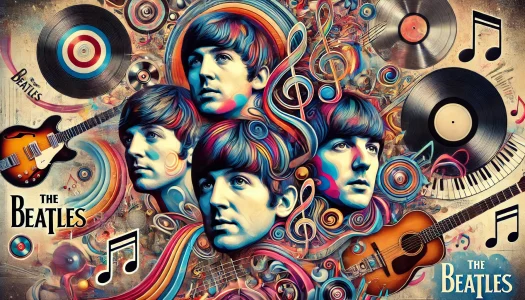The Beatles are, without question, one of the greatest bands of all time. Their influence on rock, pop, and music as a whole is immeasurable. But even legends have off days. For a group that set the bar so high, their occasional missteps stand out even more.
10. “Love You To” (1966, Revolver)
George Harrison was the first Beatle to bring Indian classical music into their sound, and while later tracks like “Within You Without You” and “The Inner Light” are beautiful, “Love You To” feels like a rough draft. The sitar-heavy arrangement lacks the emotional depth of Harrison’s later work, and the melody meanders rather than captivates. It’s a bold experiment, but it doesn’t quite land.
9. “You Like Me Too Much” (1965, Help!)
George Harrison’s songwriting skills would later blossom into something brilliant, but “You Like Me Too Much” is far from his best. The melody is pedestrian, the lyrics are awkwardly possessive, and the clunky piano intro makes it feel like a rejected show tune. It’s one of the few Beatles songs that feels like pure filler.
8. “Why Don’t We Do It in the Road?” (1968, The White Album)
Paul McCartney’s spontaneous outburst of primal energy is fun in theory but tedious in execution. Over two minutes of repetitive lyrics (“Why don’t we do it in the road?” over and over) and pounding piano make this one of the most skippable Beatles tracks. It was meant as a raw, bluesy jam, but it just comes off as unfinished and unnecessary.
7. “Dig It” (1970, Let It Be)
Clocking in at under a minute (on the album version), “Dig It” is more of a chaotic studio jam than a proper song. John Lennon essentially ad-libs nonsense over a loose groove, making it feel like filler on an already troubled album. The full version (available on Let It Be… Naked) doesn’t improve things—it just makes the listener wonder why it was included at all.
6. “Revolution 9” (1968, The White Album)
Avant-garde experiments can be fascinating, but “Revolution 9” is the kind of track that most fans listen to once out of curiosity and then never again. An eight-minute sound collage of spoken word, eerie loops, and chaotic noise, this track is more of an art piece than a song. While its influence on experimental music is undeniable, it’s nearly impossible to enjoy in a traditional sense.
5. “You Know My Name (Look Up the Number)” (1970, B-Side to “Let It Be”)
Some Beatles novelty songs are charming—this one is just baffling. A goofy, lounge-music parody with endless repetitions of the title, “You Know My Name” is the kind of track that might have been funny once in the studio but loses all appeal outside of that context. Even Paul McCartney himself has joked that it’s among their worst.
4. “Mr. Moonlight” (1964, Beatles for Sale)
The Beatles were masterful interpreters of early rock and roll, but this cover is an absolute misfire. Opening with an awkward, over-the-top vocal wail from John Lennon, “Mr. Moonlight” quickly devolves into a sluggish, melodramatic mess. The cheesy organ solo doesn’t help either. Given how many incredible covers the Beatles recorded, this one sticks out like a sore thumb.
3. “Wild Honey Pie” (1968, The White Album)
At just under a minute, “Wild Honey Pie” is more of a weird interlude than a full song, but that doesn’t make it any less painful. Paul McCartney delivers a distorted, sing-songy refrain over discordant guitar strumming, creating a track that’s grating rather than whimsical. Even for an album as eclectic as The White Album, this one feels like unnecessary filler.
2. “Ob-La-Di, Ob-La-Da” (1968, The White Album)
Some people find this song charming. Others—John Lennon included—find it infuriating. Paul McCartney’s attempt at a ska-infused, singalong tune is undeniably catchy, but the bouncy, music-hall style grates on the nerves after a while. The lyrics tell a simple story about Desmond and Molly Jones, but the sheer repetitiveness makes it one of the most divisive Beatles songs ever.
1. “Run for Your Life” (1965, Rubber Soul)
Topping the list is Run for Your Life, a song that’s aged worse than milk in the sun. The melody is decent, but the lyrics are shockingly dark—John Lennon, in a rare moment of regret, later called it his least favorite Beatles song. Lines like “I’d rather see you dead, little girl, than to be with another man” sound downright chilling today. Even by the standards of the time, the song’s overtly possessive and threatening tone makes it feel unsettling rather than enjoyable.
